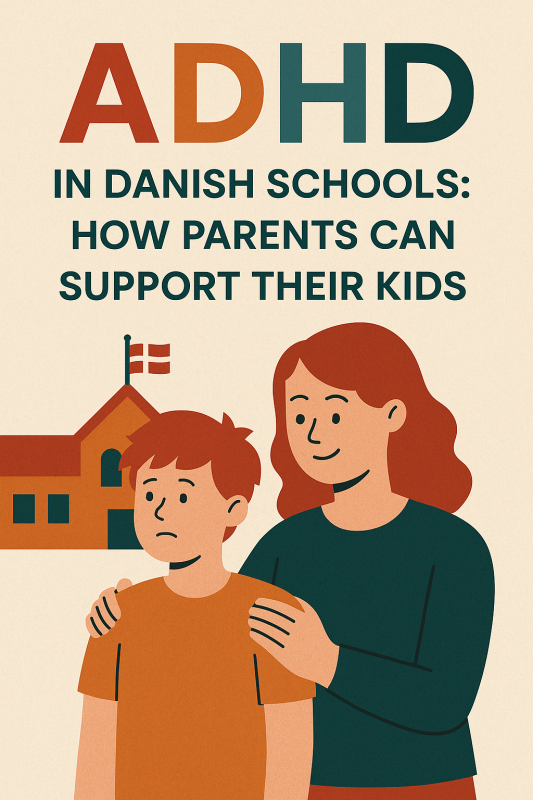ADHD
ADHD in Danish Schools: How Parents Can Support Their Kids
ADHD in Danish Schools: How Parents Can Support Their Kids
ADHD children Denmark
Raising a child with ADHD comes with unique challenges, and navigating the school system can often feel overwhelming—especially for parents in Denmark. The Danish education system is known for its inclusivity and child-centered approach, but when it comes to managing ADHD children in Denmark, many parents are still searching for clarity, resources, and support.
In this guide, we’ll explore how ADHD is handled in Danish schools, what support services are available, and, most importantly, how parents can advocate for their child’s success both academically and emotionally.
ADHD in the Danish School System
Attention Deficit Hyperactivity Disorder (ADHD) affects approximately 5-7% of children globally, and Denmark is no exception. Children with ADHD may struggle with concentration, impulse control, and staying organized—making school a particularly challenging environment.
In Denmark, children typically begin primary school (folkeskole) at age 6. The system is designed to be flexible and child-focused, and Danish educators are trained to recognize and respond to behavioral and learning difficulties. However, despite this supportive framework, ADHD children in Denmark still face barriers such as:
-
Limited time for individual support
-
Inconsistent access to specialists like school psychologists
-
Misunderstandings around ADHD as a “discipline problem”
ADHD children Denmark
How Danish Schools Address ADHD
Danish schools follow a special education model that emphasizes inclusion over segregation. Most ADHD children remain in mainstream classrooms and receive additional support as needed.
Key support systems include:
-
PPR (Pædagogisk Psykologisk Rådgivning): Municipal psychological and educational counseling available through schools. Parents can request a PPR evaluation if their child struggles with behavior or learning.
-
Special needs coordinators (ressourcepersoner): On-site staff that help teachers adapt classroom environments for children with ADHD.
-
Support teachers or classroom assistants (støttelærer): These professionals provide 1-on-1 or small group help during school hours.
Despite the system’s strengths, parents must often take an active role to ensure their child receives adequate attention.
ADHD children Denmark
How Parents Can Support Their ADHD Child in Denmark
Supporting an ADHD child starts with early identification, consistent communication, and advocacy. Here are practical steps parents can take to support their child effectively within the Danish school system:
1. Request an Evaluation Early
If your child is consistently struggling with focus, hyperactivity, or behavior, don’t wait. Request a PPR evaluation through your child’s teacher or school principal. This is the first step toward accessing tailored educational support.
2. Collaborate with Teachers Regularly
Establish a regular communication schedule with your child’s teacher. Many educators are open to weekly updates or parent-teacher meetings. Share strategies that work at home and ask what works in class.
3. Use Visual Schedules and Routines
Children with ADHD benefit from visual aids, such as picture schedules, calendars, and reminders. Coordinate with the school to reinforce routines at home and in class.
4. Explore ADHD-Friendly Learning Tools
Many Danish classrooms are now integrating assistive technologies like tablets, noise-canceling headphones, and flexible seating. Ask your school if these tools are available.
5. Apply for Extra Support via Kommune
If school-based support isn’t enough, reach out to your local municipality (kommune). Parents can request additional social and educational support under the Serviceloven (Social Services Act). This can include therapy, mentoring, or special after-school programs (SFO).
ADHD children Denmark
Medication and Therapy Options in Denmark
Denmark offers free healthcare, including child psychiatry and ADHD diagnosis. If a diagnosis is needed, your general practitioner (læge) can refer you to:
-
Børne- og ungdomspsykiatrisk center (Child and Adolescent Psychiatric Centers)
-
Private specialists (covered partly by public insurance with referral)
Common medications like Ritalin, Concerta, and Elvanse are available with prescription. Parents should consult with child psychologists or psychiatrists about side effects and therapy options.
Cognitive Behavioral Therapy (CBT) is also widely used in Denmark and can be accessed through public mental health services or private providers.
Building a Community of Support
Parenting a child with ADHD in Denmark can feel isolating, but you’re not alone. Join local or online communities like:
-
ADHD-foreningen (The Danish ADHD Association) – Offers parent workshops, legal guidance, and local events.
-
Facebook groups such as “ADHD Forældre i Danmark” – Share experiences and find emotional support.
Final Thoughts: Advocacy Is Key
While Danish schools offer many tools for inclusive education, the reality is that ADHD children in Denmark still need parental advocates. From securing a diagnosis to accessing specialized support, parents must navigate multiple systems. But with persistence, clear communication, and the right resources, your child can thrive in the Danish school environment.
Looking for ADHD-friendly learning aids or support services in Denmark? Visit ADHDLucidTrips.com — your trusted source for ADHD education, tools, and parent support.

